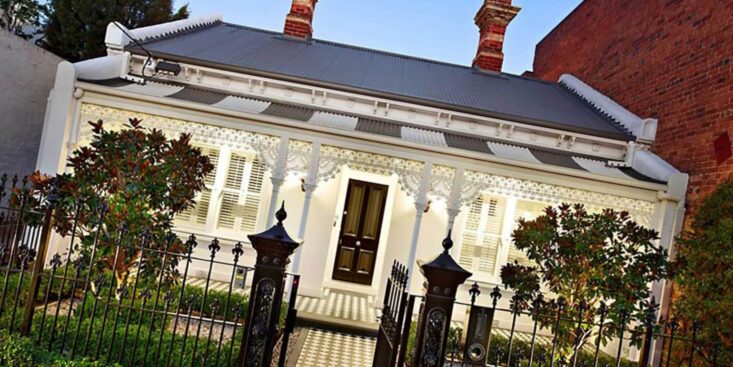COVID Takes a Nibble at House Prices, That Could Widen to a Bite
The COVID-19 pandemic has begun to bite into the residential property market, with capital city dwelling values falling a cumulative 1.3% over the past two months – but this mild weakening could be just the start of a double-digit decline.
In CoreLogic’s latest home value index, national values fell by 0.7% in June, following on from a 0.4% decline in May. For the June quarter, national values slid by 0.8%.
However, for the year to June 30, national values rose by 7.8% – powered by the Sydney market (up 13.3%) and Melbourne (up 10.2%). That strength helped to mask a disparate market, with Perth (down 2.5%) and Darwin (down 1.5%) weakening over the year.
Despite values being down in June, estimates of market activity showed a further improvement from the April low. After a (revised) 21.5% surge in sales activity through May, CoreLogic’s estimate of home sales in June was up a further 29.5%.
The most expensive quartile of housing is leading the downturn, with Sydney’s upper-quartile housing down 1.3% over the past three months, and Melbourne’s upper-quartile weakening in value by 3.7%. In contrast, the lower-quartile properties in Sydney are actually up by 0.2% over the same period, while Melbourne’s lower-quartile is down by just 0.5%.
The upper-quartile properties also led the rise, recording the most significant run-up in values throughout the second half of last year.
Projections are that the housing market will experience a correction. CoreLogic’s head of Australian research, Eliza Owen, says the consensus view is that prices will fall a total of 10% during the coronavirus recession. Investment bank UBS concurs with this percentage view.
AMP Capital has a “base case” in which home prices fall by around 5%-10%, as “true” unemployment will remain high, government job and income support measures and the bank payment holiday end in September, immigration falls and new supply is likely to be boosted via government measures designed to support home building. Sydney and Melbourne are likely to be impacted the hardest, particularly given their greater exposure to immigration, says AMP Capital.
AMP Capital originally feared a 20% fall in prices – based on a deeper Coronavirus downturn, with, say, 10% unemployment – but says that subsequent government support measures along with an earlier reopening of the economy have reduced the risk of worst-case scenarios for home prices.
CoreLogic also credits the significant government stimulus with helping to protect home values from more significant declines, along with persistently low advertised stock levels, while additionally, “low interest rates and forbearance policies from lenders have helped to keep urgent sales off the market, providing further insulation to housing values,” says head of research, Tim Lawless.
Lawless says the longer-term outlook remains highly uncertain, depending as it does to a large extent on the government’s policy decisions with respect to maintaining stimulus, much of which will depend on the progress of the Victorian government’s measures to suppress COVID-19, and continued economic re-opening in other states and territories.
“While it is encouraging to see lenders have recently hinted at an extension in their repayment leniency policies, the government stimulus will eventually taper and banks will require borrowers to repay their loans. The longer-term outlook for the housing market is largely dependent on how well the economy is tracking when these support measures are removed,” says Lawless. Both the Federal Government stimulus measures — JobKeeper and a boosted JobSeeker — have been very important in preserving stability in the housing market. Financial institutions will likely take their cue from the government’s actions.
“Another key risk relates to the eventual removal of stimulus measures and borrower repayment holidays. Eventually the economy and borrowers will need to abide by market forces. This is when we could see a rise in mortgage arrears and the potential for a lift in urgent or forced sales,” says Lawless.
Eroding property sentiment leads National Australia Bank to predict that property prices will fall by between 10%-15%.
(According to an ABC report cited by the Financial Review, the Reserve Bank of Australia (RBA) leans toward a 15% decline, too, with the Bank’s economists even considering the merits of recommending the federal government halt home sales amid the market disruption caused by the pandemic, and as concerns rose about the prospect of a housing crash!)
The latest National Australia Bank residential property survey shows that housing market sentiment collapsed in the June quarter, dropping to negative 33 points, a 71-point turnaround from the first quarter, when sentiment was at 38 points. Employment security is now the overwhelming impediment for property buyers.
NAB’s survey indicated the biggest impacts were likely to be experienced in both Victoria and New South Wales, where both house prices and rents are expected to fall in the next 12 months. While lower rents are of course great news for tenants, they are potentially disastrous for many landlords.
In terms of housing finance, last week’s lending indicator data from the Australian Bureau of Statistics (ABS) shows the value of new finance commitments for the purchase of dwellings fell by a record 11.6% over May 2020. This is the largest single monthly drop in the 18-year series.
In seasonally adjusted terms, it represents a $2.2 billion monthly fall in the value of housing finance, and is $2.0 billion below the decade-average level of lending. But CoreLogic data suggests that the June results could show a partial recovery.









